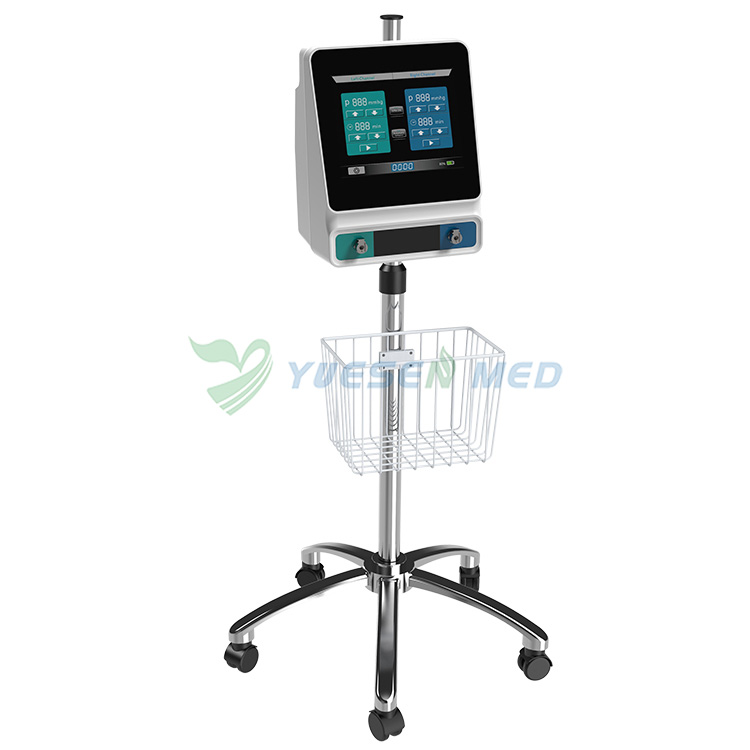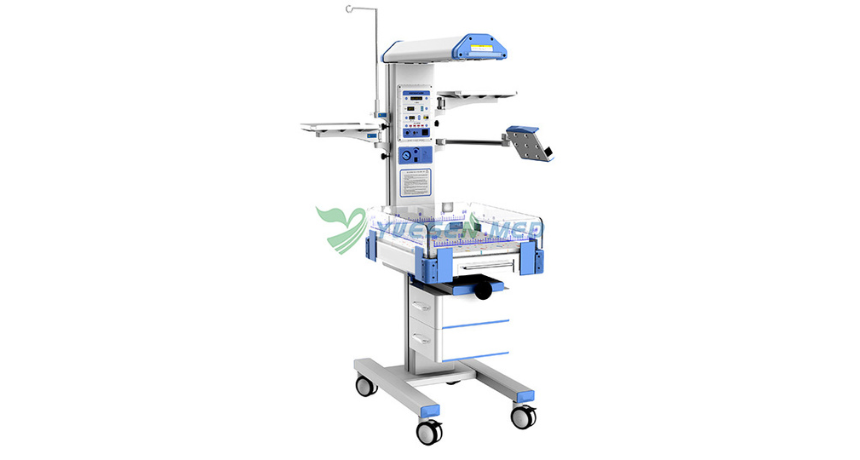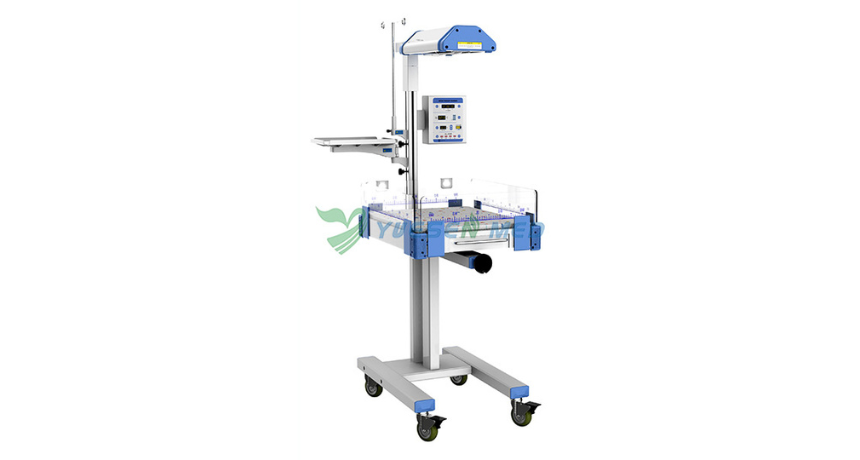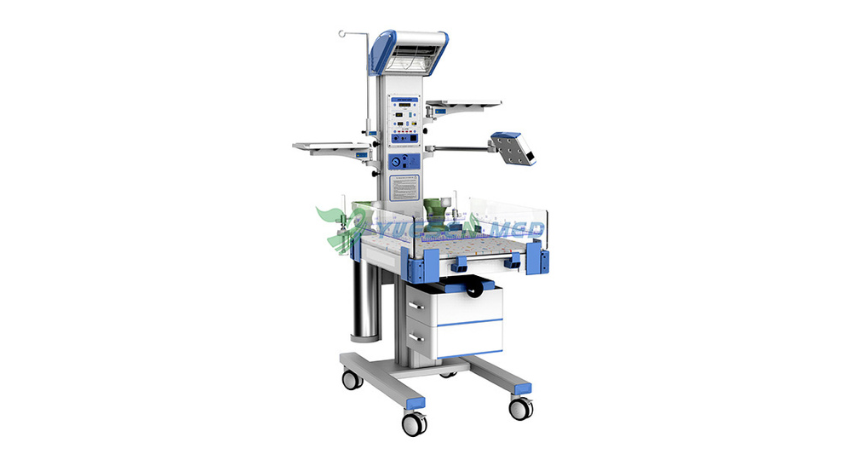Hot Products
YSX500D 50kW DR system set up and put into service in Cambodia.
YSENMED YSX500D 50kW digital x-ray system has been successfully set up and put into service in a hospital in Cambodia.
YSX056-PE serving as a vehicle-mounted x-ray in the Philippines
YSX056-PE 5.6kW portable x-ray unit has been adapted to fit on a truck, to provide mobile x-ray examination service for remote communities in the Philippines.
X Ray Machine To Zimbabwe
x ray machine, 50KW x ray machine
Microscope To Malawi
Achromatic objectives: 4X、10X、40X(S), 100X(S、Oil) Wide field eyepiece: WF10X(WF16X for option) Eyepiece head: Sliding binocular head inclined at 45° Stage: Double layer mechanical stage size 140X140mm, moving range 75X45mm Focusing: Coaxial coarse and
Efficiency Meets Safety: The Benefits of Using a Medical Automatic Tourniquet System
Views : 1574
Update time : 2024-08-25 13:58:00
When it comes to medical emergencies, every second counts. Imagine a scenario where a patient is bleeding profusely, and the clock is ticking. What if there was a way to stop the bleeding quickly and effectively, reducing the risk of complications? Enter the medical automatic tourniquet system. In this article, we'll dive deep into what these systems are, how they work, and the myriad benefits they offer to both medical professionals and patients alike.

What is a Medical Automatic Tourniquet System?
A medical automatic tourniquet system is a device designed to control blood flow to a limb or other part of the body during surgical procedures or in emergency situations. Unlike traditional tourniquets that require manual tightening, these advanced systems automatically adjust pressure based on real-time feedback, ensuring optimal performance and safety.
The Evolution of Tourniquet Technology
From Manual to Automatic
Historically, tourniquets have been used for centuries, but they were often cumbersome and required a skilled hand to apply correctly. The advent of automatic systems has revolutionized this practice, making it more efficient and safer. These systems use sensors and algorithms to monitor blood flow, providing precise control that manual methods simply can't match.
The Role of Technology in Healthcare
Technology has transformed healthcare in numerous ways, from telemedicine to robotic surgery. The automatic tourniquet system is just one example of how innovation enhances patient care. By integrating smart technology, these devices improve outcomes and streamline processes.
Key Components of an Automatic Tourniquet System
Sensors and Monitoring
At the heart of any automatic tourniquet system are its sensors. These devices continuously monitor blood flow and pressure, allowing for real-time adjustments. This means that if a patient's condition changes, the system can respond instantly.
User-Friendly Interface
Modern tourniquet systems come equipped with intuitive interfaces that make them easy to use, even for those who may not be familiar with the technology. This reduces the learning curve for medical staff and ensures that they can focus on what really matters: patient care.
Safety Features
Safety is paramount in any medical setting. Automatic tourniquet systems often include built-in safety features, such as alarms that alert staff to any issues, ensuring that problems are addressed before they become critical.
Benefits of Using an Automatic Tourniquet System
1. Enhanced Efficiency
In emergency situations, time is of the essence. Automatic tourniquet systems can be deployed quickly, allowing medical professionals to focus on other life-saving measures. The speed and efficiency of these devices can make a significant difference in patient outcomes.
2. Improved Patient Safety
With precise pressure control, automatic tourniquets reduce the risk of complications associated with improper application, such as nerve damage or tissue ischemia. This added layer of safety is crucial in high-stakes environments.
3. Reduced Training Time
Because these systems are designed to be user-friendly, medical staff can be trained more quickly. This means that even those with limited experience can effectively operate the device, which is especially beneficial in emergency settings.
4. Consistent Results
Automatic systems provide consistent pressure application, which is vital for effective hemorrhage control. This reliability helps to standardize care across different practitioners and settings.
5. Versatility in Use
Automatic tourniquet systems aren't just for emergencies; they can also be used in various surgical procedures. Their versatility makes them a valuable addition to any medical facility.
6. Data Collection and Analysis
Many modern tourniquet systems come with data collection capabilities, allowing healthcare providers to analyze outcomes and improve practices over time. This data can be invaluable for training and quality assurance.
7. Reduced Risk of Human Error
Manual tourniquet application is prone to human error, whether from misjudgment of pressure or improper placement. Automatic systems significantly mitigate this risk, leading to better patient outcomes.
8. Cost-Effective Solutions
While the initial investment in automatic tourniquet systems may be higher than traditional methods, the long-term savings from reduced complications and improved efficiency can outweigh these costs.
Real-World Applications
Emergency Medical Services (EMS)
In the field, every second matters. Automatic tourniquet systems are becoming a standard part of EMS kits, allowing paramedics to quickly control bleeding and stabilize patients during transport.
Surgical Procedures
Surgeons benefit from the precision and reliability of automatic tourniquet systems during operations. These devices help maintain a clear surgical field, improving visibility and outcomes.
Trauma Care
In trauma centers, where patients often present with severe injuries, the ability to quickly and effectively control bleeding can be the difference between life and death. Automatic tourniquets provide that critical support.
Addressing Common Concerns
Are Automatic Tourniquet Systems Expensive?
While the upfront costs can be higher than traditional systems, the potential for improved outcomes and reduced complications can lead to cost savings in the long run.
How Reliable Are These Systems?
Automatic tourniquet systems are designed with redundancy and safety in mind. Regular maintenance and calibration ensure that they remain reliable and effective.
Can They Be Used in All Situations?
While they are versatile, it's essential for medical professionals to assess each situation individually. Automatic tourniquets are not a one-size-fits-all solution but are highly effective in many scenarios.
Conclusion
The integration of automatic tourniquet systems into medical practice represents a significant leap forward in efficiency and safety. By harnessing the power of technology, these systems not only enhance patient care but also empower medical professionals to perform at their best. As we continue to embrace innovation in healthcare, the benefits of automatic tourniquet systems will undoubtedly play a crucial role in shaping the future of medical practice. So, the next time you hear about a tourniquet, remember: it's not just a simple tool; it's a lifeline that combines efficiency with safety, ultimately saving lives.
FAQ
How does an automatic tourniquet system improve patient safety?
Automatic tourniquet systems enhance patient safety by providing precise pressure control, which reduces the risk of complications such as nerve damage or tissue ischemia. The built-in safety features, like alarms for pressure issues, further ensure that any potential problems are addressed promptly, minimizing risks during critical situations.
Are automatic tourniquet systems easy to use?
Yes, most automatic tourniquet systems are designed with user-friendly interfaces that make them accessible even to those with limited experience. This ease of use allows medical staff to be trained quickly, enabling them to focus on patient care rather than struggling with complicated equipment.
What are the long-term benefits of using automatic tourniquet systems?
The long-term benefits of using automatic tourniquet systems include improved patient outcomes due to reduced complications, increased efficiency in emergency and surgical settings, and potential cost savings over time. By minimizing human error and providing consistent results, these systems contribute to better overall care and resource management in healthcare facilities.

What is a Medical Automatic Tourniquet System?
A medical automatic tourniquet system is a device designed to control blood flow to a limb or other part of the body during surgical procedures or in emergency situations. Unlike traditional tourniquets that require manual tightening, these advanced systems automatically adjust pressure based on real-time feedback, ensuring optimal performance and safety.
The Evolution of Tourniquet Technology
From Manual to Automatic
Historically, tourniquets have been used for centuries, but they were often cumbersome and required a skilled hand to apply correctly. The advent of automatic systems has revolutionized this practice, making it more efficient and safer. These systems use sensors and algorithms to monitor blood flow, providing precise control that manual methods simply can't match.
The Role of Technology in Healthcare
Technology has transformed healthcare in numerous ways, from telemedicine to robotic surgery. The automatic tourniquet system is just one example of how innovation enhances patient care. By integrating smart technology, these devices improve outcomes and streamline processes.
Key Components of an Automatic Tourniquet System
Sensors and Monitoring
At the heart of any automatic tourniquet system are its sensors. These devices continuously monitor blood flow and pressure, allowing for real-time adjustments. This means that if a patient's condition changes, the system can respond instantly.
User-Friendly Interface
Modern tourniquet systems come equipped with intuitive interfaces that make them easy to use, even for those who may not be familiar with the technology. This reduces the learning curve for medical staff and ensures that they can focus on what really matters: patient care.
Safety Features
Safety is paramount in any medical setting. Automatic tourniquet systems often include built-in safety features, such as alarms that alert staff to any issues, ensuring that problems are addressed before they become critical.
Benefits of Using an Automatic Tourniquet System
1. Enhanced Efficiency
In emergency situations, time is of the essence. Automatic tourniquet systems can be deployed quickly, allowing medical professionals to focus on other life-saving measures. The speed and efficiency of these devices can make a significant difference in patient outcomes.
2. Improved Patient Safety
With precise pressure control, automatic tourniquets reduce the risk of complications associated with improper application, such as nerve damage or tissue ischemia. This added layer of safety is crucial in high-stakes environments.
3. Reduced Training Time
Because these systems are designed to be user-friendly, medical staff can be trained more quickly. This means that even those with limited experience can effectively operate the device, which is especially beneficial in emergency settings.
4. Consistent Results
Automatic systems provide consistent pressure application, which is vital for effective hemorrhage control. This reliability helps to standardize care across different practitioners and settings.
5. Versatility in Use
Automatic tourniquet systems aren't just for emergencies; they can also be used in various surgical procedures. Their versatility makes them a valuable addition to any medical facility.
6. Data Collection and Analysis
Many modern tourniquet systems come with data collection capabilities, allowing healthcare providers to analyze outcomes and improve practices over time. This data can be invaluable for training and quality assurance.
7. Reduced Risk of Human Error
Manual tourniquet application is prone to human error, whether from misjudgment of pressure or improper placement. Automatic systems significantly mitigate this risk, leading to better patient outcomes.
8. Cost-Effective Solutions
While the initial investment in automatic tourniquet systems may be higher than traditional methods, the long-term savings from reduced complications and improved efficiency can outweigh these costs.
Real-World Applications
Emergency Medical Services (EMS)
In the field, every second matters. Automatic tourniquet systems are becoming a standard part of EMS kits, allowing paramedics to quickly control bleeding and stabilize patients during transport.
Surgical Procedures
Surgeons benefit from the precision and reliability of automatic tourniquet systems during operations. These devices help maintain a clear surgical field, improving visibility and outcomes.
Trauma Care
In trauma centers, where patients often present with severe injuries, the ability to quickly and effectively control bleeding can be the difference between life and death. Automatic tourniquets provide that critical support.
Addressing Common Concerns
Are Automatic Tourniquet Systems Expensive?
While the upfront costs can be higher than traditional systems, the potential for improved outcomes and reduced complications can lead to cost savings in the long run.
How Reliable Are These Systems?
Automatic tourniquet systems are designed with redundancy and safety in mind. Regular maintenance and calibration ensure that they remain reliable and effective.
Can They Be Used in All Situations?
While they are versatile, it's essential for medical professionals to assess each situation individually. Automatic tourniquets are not a one-size-fits-all solution but are highly effective in many scenarios.
Conclusion
The integration of automatic tourniquet systems into medical practice represents a significant leap forward in efficiency and safety. By harnessing the power of technology, these systems not only enhance patient care but also empower medical professionals to perform at their best. As we continue to embrace innovation in healthcare, the benefits of automatic tourniquet systems will undoubtedly play a crucial role in shaping the future of medical practice. So, the next time you hear about a tourniquet, remember: it's not just a simple tool; it's a lifeline that combines efficiency with safety, ultimately saving lives.
FAQ
How does an automatic tourniquet system improve patient safety?
Automatic tourniquet systems enhance patient safety by providing precise pressure control, which reduces the risk of complications such as nerve damage or tissue ischemia. The built-in safety features, like alarms for pressure issues, further ensure that any potential problems are addressed promptly, minimizing risks during critical situations.
Are automatic tourniquet systems easy to use?
Yes, most automatic tourniquet systems are designed with user-friendly interfaces that make them accessible even to those with limited experience. This ease of use allows medical staff to be trained quickly, enabling them to focus on patient care rather than struggling with complicated equipment.
What are the long-term benefits of using automatic tourniquet systems?
The long-term benefits of using automatic tourniquet systems include improved patient outcomes due to reduced complications, increased efficiency in emergency and surgical settings, and potential cost savings over time. By minimizing human error and providing consistent results, these systems contribute to better overall care and resource management in healthcare facilities.
Related News
Read More >>
 What is the Difference Between Radiant Warmer and Phototherapy?
What is the Difference Between Radiant Warmer and Phototherapy?
Apr .19.2025
Radiant warmers and phototherapy are crucial in neonatal care, but they serve different purposes. Let's dive into the nitty-gritty of these two techniques and explore how they differ, and when each is appropriate.
 YSX056-PE portable digital x-ray unit set up in the Philippines
YSX056-PE portable digital x-ray unit set up in the Philippines
Apr .19.2025
YSX056-PE portable digital x-ray unit has been set up in a hospital in the Philippines and the good quality images please the doctors.
 Is an Infant Radiant Warmer Good for Babies' Health?
Is an Infant Radiant Warmer Good for Babies' Health?
Apr .13.2025
What exactly is the infant radiant warmer, and how does it contribute to a baby's health? Let's dive into this topic and explore the ins and outs of infant radiant warmers.
 What is an Infant Radiant Warmer?
What is an Infant Radiant Warmer?
Apr .12.2025
One of the unsung heroes in neonatal care is the infant radiant warmer. But what exactly is it? Let's dive into the world of infant care and explore the ins and outs of this vital device.



